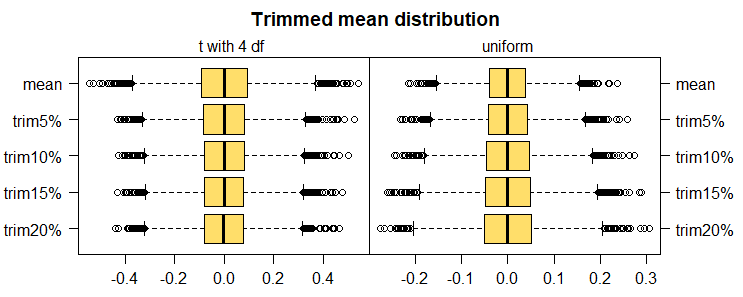In a simple experiment with the normal distribution in R I ran 500 iterations of a simulated normal distribution with N=100 each. For each iteration from the 500 iterations, I calculated both the mean and the trimmed mean with 20% trim (from each side), resulting in 500 values for each.
Then, I compared the values of both with a boxplot:

It seems that the mean values are more "precise". I have managed to reproduce these results in almost all tries, and in the tries that I couldn't, the boxplot resulted in a similar plot for each.
This feels a bit counter-intuitive. I expected for it to be the other way around, since the 20% trim will remove results with high deviation. The only explanation I was able to think of for this observation is that the trim removes data that would otherwise "balance" the mean, though, it's not a formal explanation.
Would love some insights on this observation, thanks!

